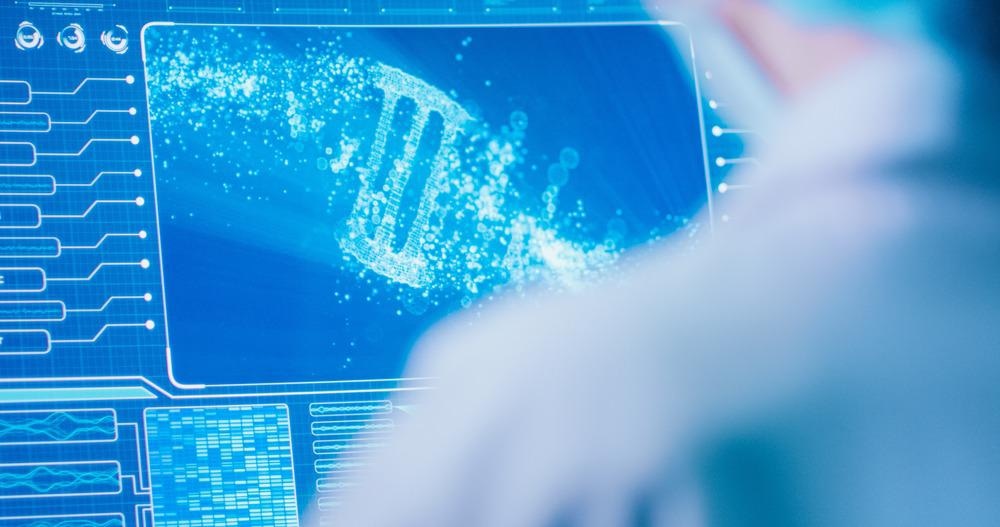Biosensors detect various biological responses and convert them into electrical signals, which are analyzed for a variety of purposes. They are highly specific and can detect signals from background noise such as temperature and pH.

Image Credit: Marcin Janiec/Shutterstock.com
The development of biosensors began back in the 1960s. Since then, a wide range of biosensors have been established, such as DNA biosensors, immuno-sensors, enzyme-based, tissue-based, thermal, piezoelectric, magnetic, and optical biosensors.
To date, biosensors have been adopted by numerous scientific fields, including food science, medical and healthcare, and marine biology. Their main benefit is that they are more stable and sensitive than alternative, traditional data collection methods. Here, we discuss how these sensors have been adapted for use in a wide range of scientific applications.
Applications
Food Industry
Traditional methods of food processing and monitoring have been updated in recent years by the adoption of biosensors. Conventional techniques are time-consuming and subject to human error. To enhance the efficacy of food processing and monitoring processing and reduce time requirements, the food industry has developed biosensors that offer a simple and inexpensive method of collecting real-time, selective data that can be automatically analyzed to generate important insights.
More importantly, biosensors have also been adapted for the detection of pathogens in food. Those that detect the presence of Escherichia coli in vegetables are such sensors that have become particularly widely adopted.
The dairy industry has made great use of enzymatic biosensors, sensors based on screen-printed carbon dioxide electrodes that are integrated into flow cells. These can immobilize enzymes via their photocross linkable polymer, enabling the quantification of organophosphate pesticides in milk. This application is vital to ensuring health and safety standards in the dairy industry.
Another way biosensors contribute to enhancing food safety is by using smart monitoring platforms that screen food for biological and chemical contaminants. Biosensors are being integrated alongside advancements in nanotechnology, electromechanical and microfluidic systems. This multidisciplinary effort is developing more effective food safety systems that protect humans from the consumption of dangerous substances.
Healthcare
Healthcare has undoubtedly benefited the most from biosensor technology. Already, biosensors are being leveraged in several medical and healthcare applications. Additionally, research and development continue to focus on this area to further advance this technology and its potential use.
One example of how biosensors are already benefiting the healthcare industry is the use of biosensors to monitor and manage diabetes. Another is the use of biosensors in the diagnosis of infectious diseases. Recently, there have been promising developments in biosensor technology to identify urinary tract infection (UTI).
Biosensors are also facilitating the early diagnosis of cardiovascular diseases. This sensor technology employs biochemical, molecular recognition for biomarkers of these diseases, offering a fast, cost-effective, and reliable early-detection method. They are being used to replace traditional assays that are time-consuming and require qualified personnel, helping to speed up and enhance the availability of diagnostic tests for one of the world’s biggest killers.
In cancer and drug discovery, the use of fluorescent biosensors has generated important insights relating to the regulation of enzymes at the cellular level. Fluorescent probes are mounted onto fluorescent biosensors via receptors.
These receptors are designed to identify a specific target; upon attachment to the target, a fluorescent signal is produced, which can be measured.
To date, fluorescent biosensors have been used to detect many biological targets, such as ions, metabolites, and proteins. They have also been used to probe gene expression and protein localization. Such methods have been helpful in the research of arthritis, cancer, cardiovascular and neurodegenerative diseases, inflammatory diseases, and viral infection.
Additionally, biosensors are also being used to rapidly detect types of HPV, identifying those that are related to cervical cancer. This biosensor application is helping to highlight women who may be at risk of developing cervical cancer so that preventative treatment can take place before the disease has a chance to develop.
Challenges
While biosensor technology has vastly developed over recent years and has been widely adopted in numerous scientific fields, particularly in medicine, they are yet to reach their full potential. In spite of the significant contributions biosensors have made in academic research, there are very few biosensors that have reached commercial success.
Generally, this is because it is challenging to translate academic research into commercially viable prototypes.
Future
In the future, developments in nanotechnology will likely integrate with biosensors, building a new era of technologies. Nanomaterials have the potential to enhance the electrochemical, optical, magnetic, and mechanical properties of biosensors. Additionally, they may also help establish single molecule biosensors that will be vital to uncovering vital information about the structure and function of biological mechanisms at the single molecule level.
Interview: Biosensor Technology for the Detection of Kidney Disease.
References and Further Reading:
Bhalla, N., Jolly, P., Formisano, N. and Estrela, P., (2016) Introduction to biosensors. Essays in Biochemistry, 60(1), pp.1-8. Available at: https://dx.doi.org/10.1042%2FEBC20150001
Mehrotra, P., (2016) Biosensors and their applications – A review. Journal of Oral Biology and Craniofacial Research, 6(2), pp.153-159. Available at: https://dx.doi.org/10.1016%2Fj.jobcr.2015.12.002
Disclaimer: The views expressed here are those of the author expressed in their private capacity and do not necessarily represent the views of AZoM.com Limited T/A AZoNetwork the owner and operator of this website. This disclaimer forms part of the Terms and conditions of use of this website.